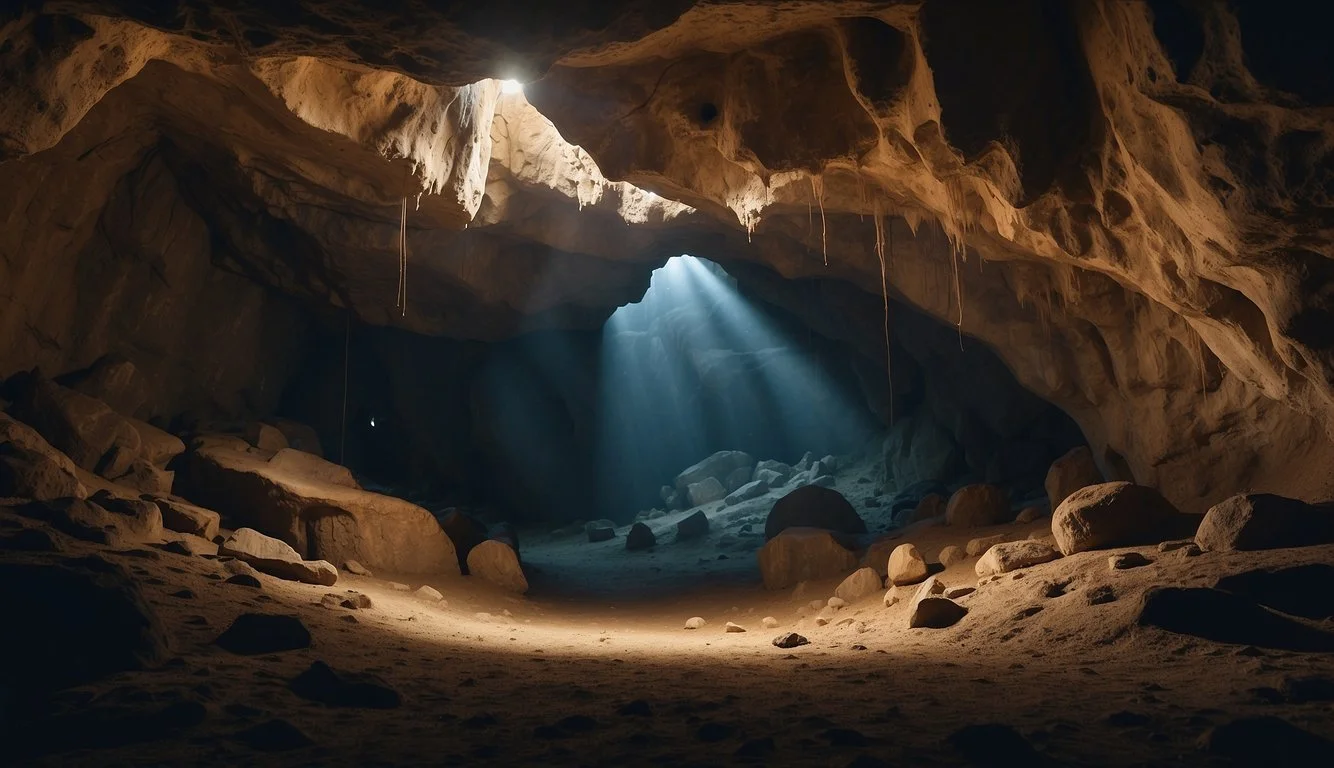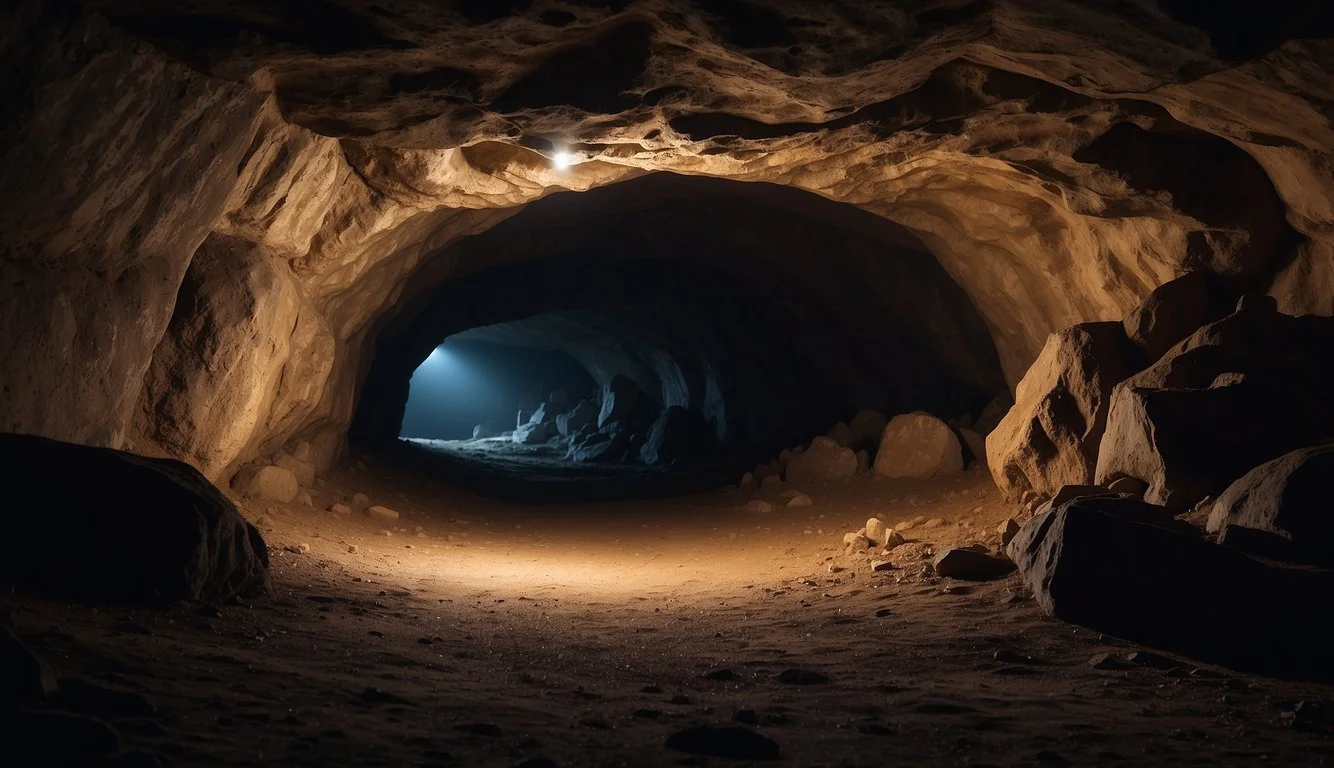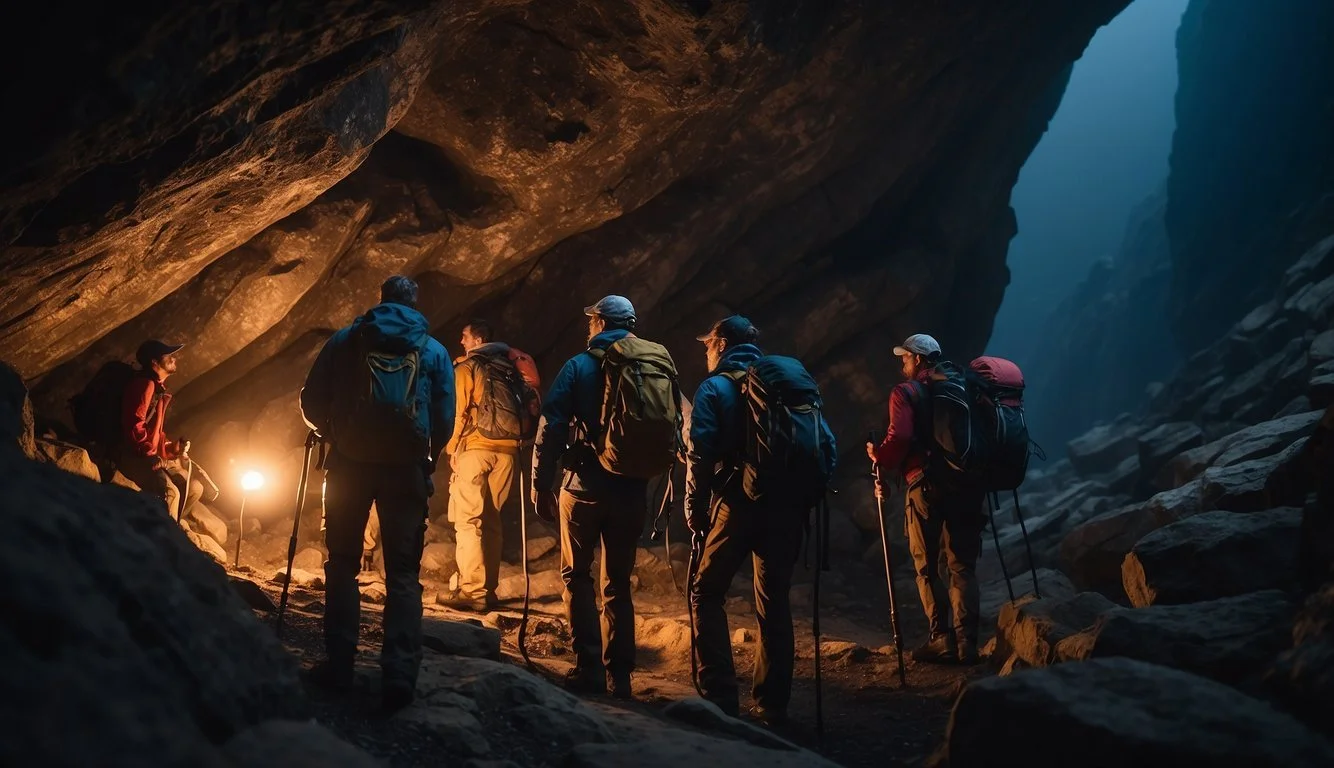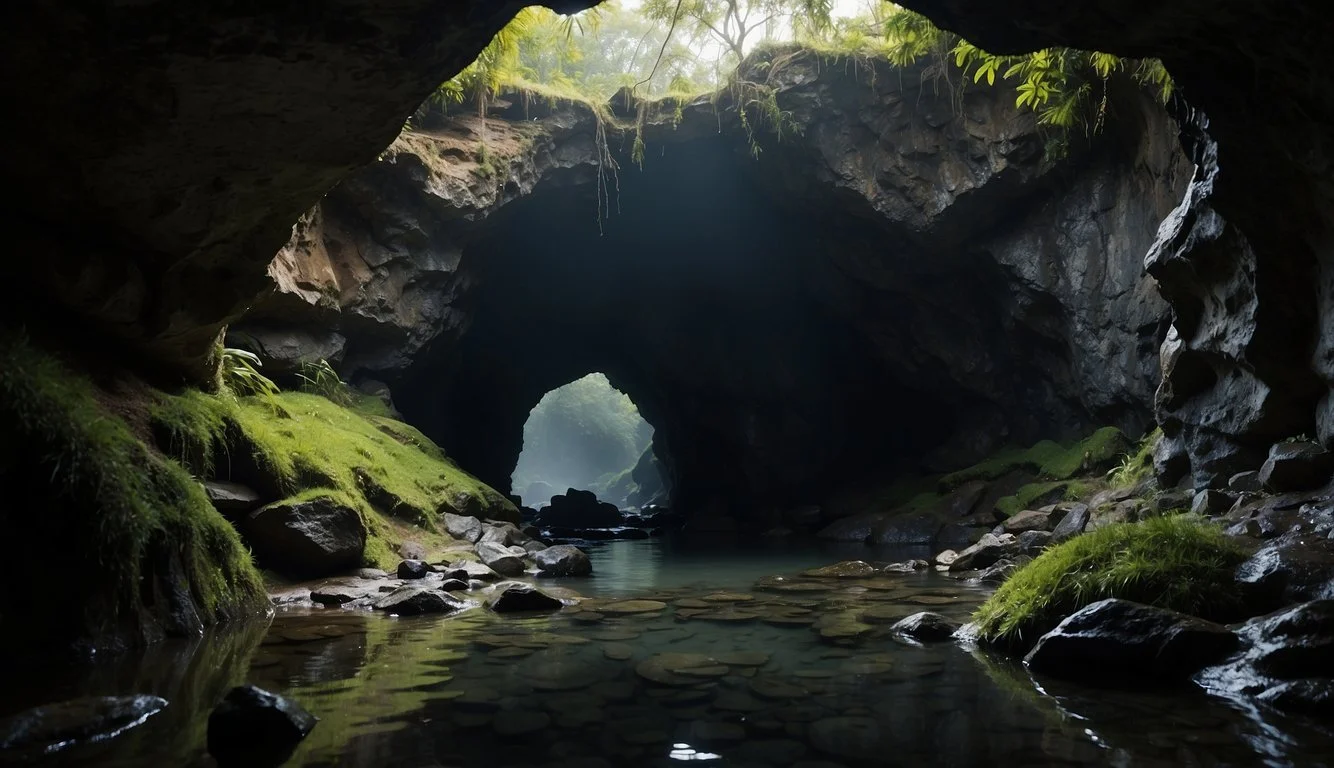Documentary Review: The Cave (2019)
A Harrowing Tale of Resilience
Feras Fayyad's 2019 documentary "The Cave" is a deeply affecting portrayal of life in war-torn Syria. The film centers on an underground hospital in Eastern Ghouta, where a team of courageous doctors, led by Dr. Amani Ballour, provides urgent medical care amidst intense bombings and devastation. Through its gripping narrative and powerful visuals, "The Cave" not only documents the dire realities of war but also highlights the resilience and bravery of those fighting to save lives.
The film is particularly notable for its focus on the female doctors working under harrowing conditions. Dr. Ballour's leadership stands as a beacon of hope, challenging societal norms in a region where women's roles are often restricted. The scenes captured in the documentary are raw and unfiltered, offering viewers an intimate look at both the horrors of conflict and the strength of human spirit.
Critically acclaimed by sources such as Roger Ebert and Variety, "The Cave" is praised for its unflinching depiction of the Syrian crisis and the extraordinary efforts of medical professionals. This documentary serves as a poignant reminder of the ongoing struggles in Syria and the unwavering dedication of those risking everything to provide care in the most perilous conditions. "The Cave" is not just a film; it's a testament to the indomitable will to survive and help others in the face of unimaginable adversity.
Overview of 'The Cave'
The Cave is a 2019 documentary directed by Feras Fayyad.
The film focuses on the Syrian Civil War, specifically highlighting a hospital operating in an underground cave in Eastern Ghouta, Syria.
The hospital is managed by Dr. Amani Ballour, a determined female pediatrician. Her leadership in a predominantly male society is a focal point of the documentary.
Fayyad's documentary provides a poignant look at the harsh realities faced by civilians.
Key Aspects:
Setting: A subterranean hospital in war-torn Syria.
Main Figure: Dr. Amani Ballour.
Time Period: 2016-2018.
Themes: Human suffering, resilience, gender roles.
The film uses a mix of on-the-ground footage and intimate interviews with the staff and patients. It portrays the relentless bombing and the dire conditions under which the medical team operates.
The Cave also explores the emotional and psychological toll on those striving to save lives amid constant danger.
Genre and Length:
Genre: Documentary
Length: 1 hour and 35 minutes
Produced by National Geographic, the film has received critical acclaim for its raw and unfiltered portrayal of life in a conflict zone.
The Cave stands as a testament to the resilience and heroism of medical professionals in the most challenging circumstances.
Filmmaking Techniques
Feras Fayyad's "The Cave" employs distinct filmmaking traits that effectively convey the harsh realities faced by its subjects, from underground hospital staff to besieged civilians in Syria. Key elements include evocative cinematography, precise editing, immersive sound design, and a compelling narrative structure.
Cinematography
The cinematography in "The Cave" plays a crucial role in immersing viewers in its subterranean setting. Cinematographer Muhammed Khair Al Shami uses tight framing to capture the confined, claustrophobic spaces of the underground hospital. Close-ups on the medical staff emphasize their emotional burdens, while handheld shots convey a sense of immediacy and urgency. The lighting, often minimal and stark, reflects the scarcity of resources and the direness of the situation.
Editing
Editing is critical in maintaining the documentary's pace and tension. Editor Per K. Kirkegaard masterfully combines real-time sequences with archival footage, creating a coherent and impactful narrative. The cuts are often fast-paced, mirroring the chaos and urgency in the hospital. Transitions between scenes of medical emergencies and moments of quiet reflection highlight the relentless pressure faced by the hospital staff, making the audience deeply feel the stress and stakes involved.
Sound Design
Sound design in "The Cave" is pivotal in building an immersive atmosphere. The juxtaposition of audible explosions, sirens, and the constant bustle of the hospital against moments of silence effectively underscores the perpetual threat and tension. Dialogue, predominantly in Arabic, is clear and often set against a backdrop of ambient hospital sounds. This technique ensures viewers are consistently reminded of the lurking dangers, enhancing the documentary's emotional impact.
Narrative Structure
"The Cave" follows a structured yet organic narrative approach. It centers on Dr. Amani Ballour, the hospital's leader, presenting her struggles and triumphs as emblematic of the broader conflict. The narrative intersperses personal stories with broader political commentary, thereby providing a multi-faceted view of the crisis. This method ensures that the documentary maintains its emotional grip while offering insightful perspectives on the Syrian war.
Themes and Messages
"The Cave" (2019) explores significant themes related to the Syrian Civil War, emphasizing the suffering of civilians, the strength of women, the brutal realities of warfare, and the enduring hope and resilience of those affected.
The Plight of Civilians
The documentary sheds light on the dire conditions faced by Syrian civilians. It captures daily life in a war-torn environment, where basic necessities like food and medical care are scarce. The film highlights the endless suffering endured by civilians, under constant threat from bombings and violence.
Through personal stories and vivid imagery, viewers gain an understanding of the widespread despair and desperation, providing a powerful commentary on the human cost of prolonged conflict.
Women's Empowerment
A focal point of the film is Dr. Amani Ballour, a pediatrician who runs an underground hospital. Her leadership and dedication challenge traditional gender roles in Syrian society. The documentary portrays her as a symbol of courage and resilience.
Dr. Ballour's work not only saves lives but also inspires other women to step into leadership positions, emphasizing the crucial role women play in war and peace efforts. This theme underscores the growing recognition of women's capabilities and their right to equality.
The Horrors of War
Graphic and deeply unsettling, the film does not shy away from showing the cruel and violent reality of war. Images of injured children, destroyed homes, and overwhelming medical emergencies are frequent.
This relentless portrayal of violence and suffering serves to remind viewers of the ongoing humanitarian crisis in Syria. The film uses these harrowing visuals to galvanize viewers, pushing them to acknowledge the severe impact of war on innocent lives.
Resilience and Hope
Amidst the chaos and destruction, "The Cave" also highlights the indomitable spirit of those who refuse to give up. Scenes of camaraderie among hospital staff, moments of laughter, and simple acts of kindness provide glimpses of hope.
These elements of resilience and optimism illustrate the human capacity to find light even in the darkest times. They serve as a testament to the enduring strength and solidarity within the community, offering a narrative that goes beyond despair to include hope and renewal.
Contextual Analysis
The documentary The Cave (2019) by Feras Fayyad delivers a harrowing look into the lives of medical personnel operating in an underground hospital in war-torn Syria. This section examines the historical background, the ongoing conflict in Syria, and the critical role of healthcare.
Historical Background
Before the current conflict, Syria was a relatively stable country under the long-term rule of President Hafez al-Assad, followed by his son Bashar al-Assad. Post-2011, the Arab Spring protests escalated into a full-scale civil war. Feras Fayyad's work documents this turbulence, demonstrating the extensive suffering endured by civilians and those striving to provide essential services amidst chaos.
Key Events:
2011: Arab Spring-inspired protests
2012: Escalation into civil war
2016-2018: The period The Cave focuses on
Impact: The war fundamentally altered Syria's landscape, affecting every aspect of civilian life, particularly healthcare.
The Syrian Civil War
The Syrian civil war is a multi-faceted conflict involving numerous factions, including the Syrian government, rebel groups, and international players. Fayyad captures the devastation wrought by continuous bombings and sieges, especially in areas like Eastern Ghouta.
During the period highlighted in The Cave:
Besiegement: Civilians trapped with limited access to essentials
Airstrikes: Constant threat of bombings targeting infrastructure
International Attention: Sporadic and often ineffective intervention
Fayyad's film emphasizes the relentless nature of the conflict, making it clear how dire the situation was for those living there.
The Role of Healthcare
In the midst of conflict, the underground hospital featured in The Cave represents a beacon of hope. Led by Dr. Amani Ballour, the facility tackled immense challenges with scant resources. Staff worked tirelessly under perilous conditions to provide care.
Challenges Faced:
Resource Scarcity: Medicine, supplies, and equipment
Safety: Constant threat from bombings
Mental Strain: Emotional toll on healthcare workers
Despite these adversities, the dedication of Dr. Amani and her team sheds light on the resilience and strength found in dire times. The hospital was not merely a place of treatment but a symbol of resistance against overwhelming odds.
Critical Reception
"The Cave" has garnered significant attention from critics, received various awards and nominations, and elicited notable reactions from audiences. Below is an in-depth look at its critical reception.
Critical Response
Critics have largely praised "The Cave" for its powerful depiction of human suffering under dire circumstances. Roger Ebert’s review highlights the film’s intense focus on the underground hospital and the relentless dedication of its staff. The Los Angeles Times commends the documentary for drawing attention to the Syrian crisis, portraying caves not just as shelters but as places of hope against overwhelming odds.
National Geographic's coverage emphasizes the film's raw emotional impact, categorizing it as a rare and unforgiving glimpse into 21st-century atrocities. The New York Times, designating it a critic's pick, appreciates its cinematic storytelling and the poignant, unfiltered look into war-torn Syria.
Awards and Nominations
"The Cave" has been recognized extensively in the awards circuit. Notably, it was nominated for the Academy Award for Best Documentary Feature, a testament to its impact and the quality of its storytelling.
Other prominent nominations include the Critics' Choice Documentary Awards and the International Documentary Association (IDA) Awards. Additionally, it received accolades at film festivals, cementing its status as a standout in the documentary genre.
Winning several awards, including Best Director for Feras Fayyad, the documentary has solidified its reputation in cinematic circles. Its array of awards highlights both technical prowess and emotional depth.
Audience Reception
Audiences have responded fervently to "The Cave," often citing its raw emotion and gripping narrative as key elements. Viewer ratings on platforms such as Rotten Tomatoes and IMDb reflect a strong positive reception, with high scores indicative of its widespread appeal.
Social media reactions have also been overwhelmingly positive, with many viewers expressing profound empathy and heightened awareness of the Syrian conflict after watching.
Common feedback includes praise for the film’s unflinching honesty and the compelling portrayal of its subjects. The documentary has sparked conversations about global humanitarian issues, influencing public opinion and inspiring activism.
Ethical Considerations
Feras Fayyad's documentary "The Cave" explores critical ethical angles, including the portrayal of human suffering, maintaining journalistic integrity, and ensuring proper consent during filming. The handling of these aspects is crucial to producing an ethically sound and impactful documentary.
Portrayal of Suffering
The film depicts intense scenes of medical crises and war-induced horror. Showing such raw human suffering raises ethical concerns about exploitation and viewer desensitization. Filmmakers must balance storytelling with respect for the subjects' dignity, avoiding unnecessary graphic details while still conveying the gravity of their experiences. Judicious editing, sensitive narration, and preserving the subjects’ humanity are vital for responsible filmmaking.
Journalistic Integrity
Journalistic integrity is essential in conflict zones, where the stakes are high. "The Cave" adheres to rigorous standards, ensuring accurate representation of events without sensationalism. Fayyad’s background in journalism showcases a commitment to truth, making sure his documentation is credible. The use of verified sources, corroboration of events, and presenting both hardships and moments of resilience all contribute to maintaining journalistic standards.
Filming Consent
Securing informed consent from subjects in wartime environments is particularly challenging. "The Cave" ensures that individuals featured are aware of the implications of their participation. Given the dire circumstances, obtaining consent may sometimes be constrained, but efforts to communicate the purpose and potential impact of the film are evident. This respect for individuals' agency, despite the chaos surrounding them, forms a cornerstone of ethical documentary filmmaking.
Comparative Analysis
The documentary The Cave can be examined alongside similar documentaries to highlight its unique attributes. Additionally, it adheres to typical conventions of its genre while introducing notable elements.
Similar Documentaries
The Cave shares thematic and stylistic similarities with other documentaries that focus on human resilience amidst conflict. Notable examples include For Sama and City of Ghosts.
Both For Sama and The Cave provide intimate, harrowing depictions of women amid the Syrian conflict, emphasizing their roles in survival and resistance.
City of Ghosts also delves into the Syrian crisis but with a focus on journalism and activism. The raw, on-the-ground reporting style seen in these films serves to immerse the viewer in the visceral realities of war.
These films, like The Cave, prioritize the human narrative, showcasing personal stories to underscore broader socio-political issues.
Genre Conventions
The Cave adheres to several genre conventions typical of war documentaries, including real-time footage and direct interviews. The use of a handheld camera is prevalent, enhancing the authenticity and immediacy of the scenes within the subterranean hospital.
Another significant convention is the focus on individual stories, centralizing Dr. Amani Ballour and her colleagues. This personalizes the extensive humanitarian crisis, offering viewers a distilled yet impactful perspective.
Additionally, the documentary employs subtitles to bridge language barriers, ensuring accessibility and enhancing emotional engagement. By adhering to these conventions, The Cave maintains its credibility and emotional resonance.
Educational Value
The Cave (2019) provides a compelling look into the Syrian Civil War through the lens of a field hospital. Directed by Feras Fayyad, the documentary conveys the harsh realities of war and the resilience of medical professionals.
One key educational aspect is the focus on the subterranean hospital. Staffed by dedicated individuals, this underground facility highlights the extreme measures taken to ensure medical care during conflict.
The film's portrayal of daily life under siege serves as an eye-opener. It offers insight into the logistical and emotional challenges faced by healthcare providers and patients.
Key Takeaways:
The operational dynamics of an underground hospital.
The impact of war on civilian infrastructure and healthcare.
The role of women in sustaining essential services under dire conditions.
By spotlighting the contributions of women in these perilous settings, The Cave showcases their integral role in crisis situations.
The documentary also emphasizes the ethical dilemmas encountered by medical staff. They are often forced to make heart-wrenching decisions due to limited resources, providing a stark lesson in the moral complexities of wartime medicine.
This real-world context turns The Cave into a valuable educational resource. It can inform discussions on international relations, humanitarian work, and medical ethics.
By capturing the unfiltered reality of conflict-driven healthcare, The Cave serves as an educational tool that deepens viewers' empathy and understanding of wartime hardships.
Final Thoughts
The Cave (2019) offers a powerful and haunting look at the challenges faced by medical professionals during the Syrian Civil War. Directed by Feras Fayyad, the documentary captures the stark realities experienced by Dr. Amani Ballour and her team in the underground hospital known as "the Cave."
Through a mix of intimate interviews, raw footage, and personal narration, viewers are immersed in the dire conditions of the makeshift hospital. The film's cinematography effectively highlights the claustrophobic and perilous environment.
Dr. Amani's resilience and dedication stand out as central themes. Her leadership under such extreme pressure showcases both the strength and vulnerability of those on the front lines of humanitarian crises.
The juxtaposition of daily life above ground and the turmoil below adds depth to the narrative. The film doesn't shy away from showing the harsh impacts of war on ordinary civilians.
Visuals: The film is visually compelling, using stark contrasts between the dark tunnels and the occasional glimpses of life on the surface.
Sound: The sound design intensifies the tension, with echoes and distant explosions frequently heard, contributing to the atmosphere of constant danger.
Editing: The pacing maintains a steady balance between high-stress sequences and quieter, reflective moments, allowing viewers to absorb the gravity of the situation.
While the epilogue aims to end on a hopeful note, some critics find it slightly disjointed from the film's overall tone. Despite this, the documentary remains a poignant and essential viewing experience, shedding light on the often overlooked heroes of the conflict.






